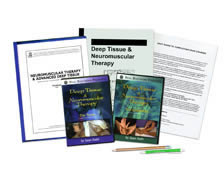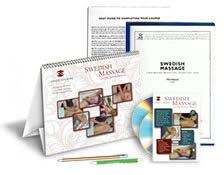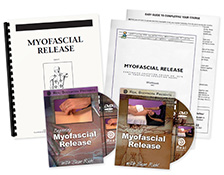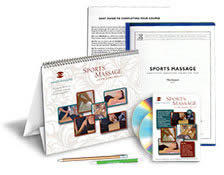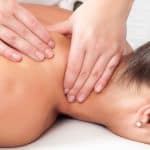Riding the heat waves of a long summer has likely taken a toll on many previously unaffected clients. While intense hot spells are often a concern for the young and elderly, just about anyone lingering in hot weather is prone to its ravages. Muscle cramps are most common for people who become dehydrated or participate in physical activity in high temperatures. Bodyworkers can directly help a client overcome a painful cramp or educate their clients on its prevention.
Electrolyte Imbalance
Suddenly emerging as a sharp pain, a muscle cramp is a sustained muscular contraction. While there are several possible triggers for muscle cramps, an electrolyte imbalance is often the cause when a person is overheated. The physiology of muscle contraction centers on the interplay between positive and negative charges activating muscle tissue. Charge-carrying electrolytes, namely potassium, sodium, calcium and magnesium, enter muscle cells, initiating either a state of contraction or relaxation.
Caused by hot temperature or excessive activity, perspiration is the loss of body fluid through the skin. Because sweat is laden with electrolytes, excessive perspiration can result in an electrolyte imbalance that can delay muscular relaxation, causing a sustained muscular contraction.
Cramp Locations
While different muscle groups can cramp, the calf and foot are most common affected. Abdominal cramps can accompany a gastrointestinal problem or a painful menses. To rule out a myocardial infarction, cramping in the chest or upper body should always be referred to a physician. Another client requiring referral to a physician is a person experiencing habitual muscle cramps. Habitual cramping may signify a more serious metabolic condition.
Hands-on Cramp Help
A client who is prone can easily experience muscle cramps during a bodywork session. A therapist can help its dissipation with the following methods:
- Massage – Massaging the cramped muscle increases circulation in the tissue, providing a rush of new fluid to bathe and relax the tense muscle. Swedish, neuromuscular and myofascial release techniques are particularly effective. However, a therapist must be aware that a client with a cramped muscle may be in too much pain for physical manipulation of the muscle.
- Reciprocal Inhibition – Commonly used in sports massage, reciprocal inhibition is the application of resisted tension to the opposing muscle group. By activating the opposing muscle group, reciprocal inhibition forces the contracted muscle to relax. For example, a cramp in the posterior, lower leg can be relieved by applying resisted tension to the anterior, lower leg muscles.
- Hot Pack Application – While not hot enough to cause perspiration, the radiance of a hot pack applied to a cramping muscle can enhance circulation. In addition to potentially alleviating the cramp, this technique is particularly soothing.
Cramp Prevention
If a client reveals a tendency towards muscle cramps, or experiences one during a session, suggested preventive care tips could be welcomed and of great benefit. As long as it is within your scope of practice to mention these tips, consider imparting the following information to clients:
- Hydration – In hot weather, stay hydrated. When overheated, carrying around and sipping from a water bottle is one way to cool off. For excessive perspiration, an electrolyte-containing beverage can not only re-hydrate, but also prevent the imbalance caused by electrolyte loss.
- Stay cool – During a heat wave, encourage clients to seek a cool location and refrain from strenuous activity outdoors during the hottest times of day.
- Eat a banana – Bananas are loaded with potassium, and can give the body enough potassium to counter what is lost during perspiration.
- Stretching – Stretching the legs and feet prior to, and after physical activity lengthens and bathes the muscles with oxygen-rich blood. This circulation enhancement method provides substantial fluids which can prevent cramping.
Another Consideration
In Traditional Chinese Medicine (TCM), those prone to recurrent muscle cramps may be experiencing an imbalance known as Liver Blood Deficiency. Other symptoms falling into a Liver Blood Deficiency pattern include fatigue, thirst, muscle spasms, dry eyes, headaches and insomnia. While only a qualified professional can diagnose this pattern, being aware of its existence could lead a massage therapist to offer a valuable referral. If liver blood deficiency is confirmed by a TCM practitioner, the following acupressure points can benefit this client:
- Gallbladder 34 – Located in the depression anterior and inferior to the head of the fibula.
- Stomach 36 – Located four finger breadths below the eye of the knee, one finger breadth lateral to the anterior crest of the tibia, in the tibialis anterior muscle.
- Liver 3 – Located in the web on the dorsum of the foot, in the depression distal to the junction of the first and second metatarsal bones.
- Spleen 6 – Located four finger breadths directly above the tip of the medial malleolus, on the posterior border of the medial aspect of the tibia.
- Spleen 10 – Located with the knee flexed, the point is two and a half finger breadths above the bulge of the medial portion of the quadriceps femoris muscle.
Through the direct application of bodywork methods or the sharing of information, massage therapists can take an active role in eliminating muscle cramps.

